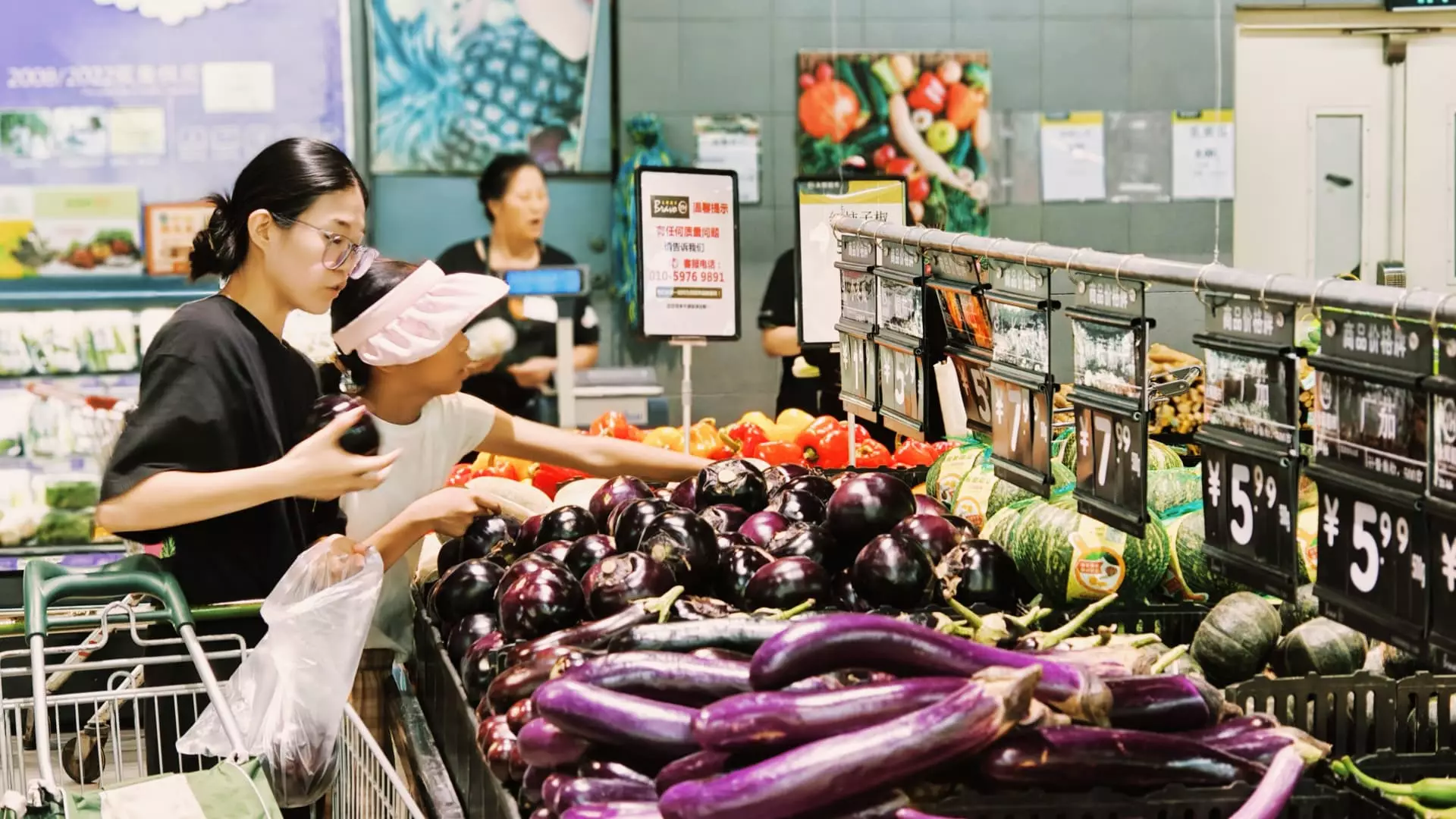In August 2023, China’s consumer price index (CPI) demonstrated modest growth, increasing by just 0.6% year-on-year. This figure fell short of analysts’ expectations, which had anticipated a 0.7% rise. The underwhelming inflation response highlights ongoing challenges within the Chinese economy, particularly in sectors such as transportation, housing goods, and rental markets that have experienced a downturn. Such stagnation can be attributed to the lingering aftereffects of the pandemic, which has dampened domestic demand and consumer sentiment across the nation.
A deeper exploration into the components of the CPI reveals a contrasting behavior in food prices, which witnessed an uptick of 2.8%—the first positive growth since June. Particularly noteworthy are the surges in pork prices, which soared by 16.1%, alongside an eye-watering 21.8% increase in vegetable prices. The food sector often plays a pivotal role in CPI calculations, and these changes not only reflect seasonal demand but also reveal the impact of supply chain dynamics still being adjusted post-pandemic.
Core Inflation and Economic Implications
Core CPI, excluding volatile food and energy costs, rose by a mere 0.3%. This sluggish increase has persisted for two consecutive months, suggesting a broader trend toward muted inflationary pressures within the economy. As economic indicators reveal a slow recovery, discussions among experts, including former central bank head Yi Gang, have turned toward the critical issue of deflationary threats. Yi’s remarks at a recent conference underscore the necessity for proactive measures to combat these pressures, with predictions indicating that by the end of the year, inflation could stabilize just above the zero mark.
This scenario is not merely academic. The sluggish growth in consumer prices can have profound implications for the country’s economic landscape. For example, retail sales in July only demonstrated a meager increase of 2.7% year-on-year, reflecting consumer hesitancy. As upcoming retail sales and industrial data are anticipated, a persistent decline in consumer spending could signal deeper systemic issues within the economy, prompting concerns that stagnation may lead to a spiral of reduced production, investment, and overall economic growth.
The Producer Price Index: A Reflection of Manufacturing Trends
Compounding these inflationary challenges, the producer price index (PPI) reported a decline of 1.8% year-on-year in August, which exceeded expectations of a 1.4% drop. The PPI serves as a critical barometer for manufacturing health and industry trends. The compounded decrease is indicative of oversupply issues and a lack of robust demand from consumers, ultimately pressuring manufacturers and potentially curtailing future investments.
The present economic landscape in China is riddled with complexities. The subdued inflationary figures, together with the recent highlights in food pricing, provide a mix of challenges and opportunities for policymakers. As China continues to navigate these issues, the need for strategic interventions to instigate demand and manage inflation becomes increasingly vital for ensuring sustainable economic growth.

